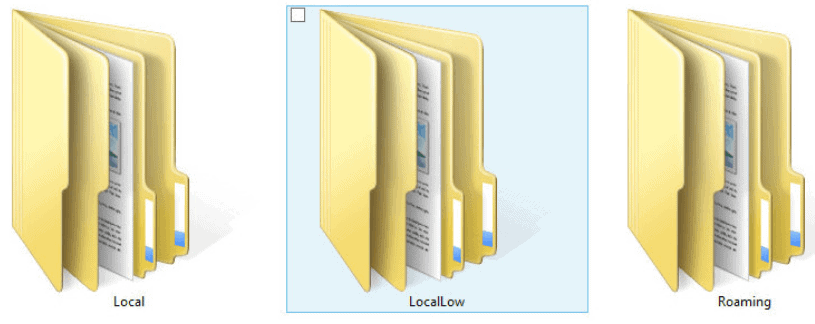Local, LocalLow and Roaming Folders: If you are using Windows and you like to look for sure you have met them. If you do not know where they are, it's very easy to find them: 
If you open RUN (Win+R) in Windows 10 and type %AppData% or if you open the File exploration and paste the same in the location bar, you will be taken to a folder called AppData.
This folder exists in the user profile and is created by Windows. There are three others in the folder: Local, LocalLow, and Roaming. Within them you will find folders for the various applications running on your system.
These folders are not the place where your apps are installed, and below we'll see what each one does.
Local, LocalLow, and Roaming envelopes
As already mentioned, these files are created by Windows itself. Even if you do not have applications installed on your system, the three folders exist within the AppData folder. They will find everything you need to run an application you are installing properly. Chrome, for example, will add a Google folder to Roaming while iTunes will add an Apple folder down to Local. The applications you install decide for themselves where to create their folders, but the "decision" of each application has a purpose.
Location
Mention once again that these folders are in the profile of every Windows user. Applications that create folders in Local and save data means they will never leave your system. If you delete the user profile, the applications and data stored in Local will not be deleted.
LocalLow
LocalLow is virtually the same as Local, however, applications that store data in LocalLow because they do not have access rights to store data in Local, or because data is of the kind that should not be stored in Local or Roaming. For example, if you use portable applications, they can create folders here if they do not create them on Local. For example, Adobe stores files in this folder and in the other two folders.
roaming
All folders present in Roaming can be synchronized on a server and can be copied between computers to move a user's profile. Apps that create folders and store files here, like Chrome, do so because they sync their files through a web service. Chrome stores in the Roaming folder the profile of the user you have created in the browser.
There are apps that create folders on all three, storing different files in each. Adobe is an example but Microsoft also create and store some Windows files in each of these folders. If you tamper with these files there may be some data loss, for example you may delete some of your bookmarks from the program browsing, but it won't break your system.
_____________________________
- AV-TEST are the best security suites for Windows 10
- Google Location Services: Turn off the service completely
- Windows 10 Prevent Installation of Preinstalled Apps
- Facebook: Reveals what data you share with third parties





